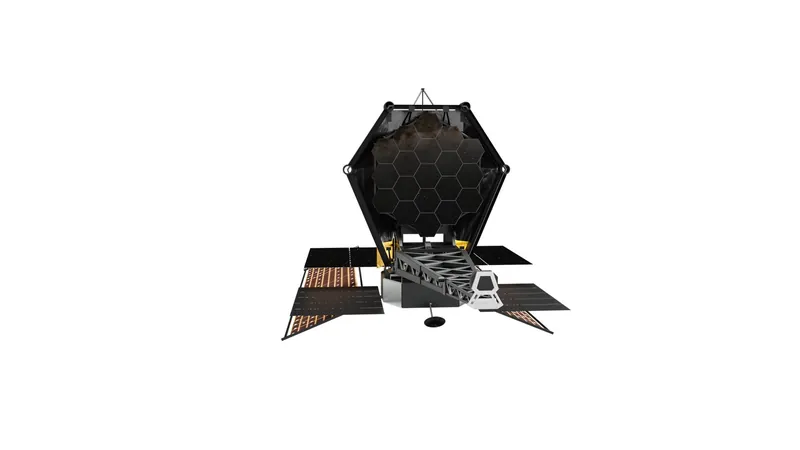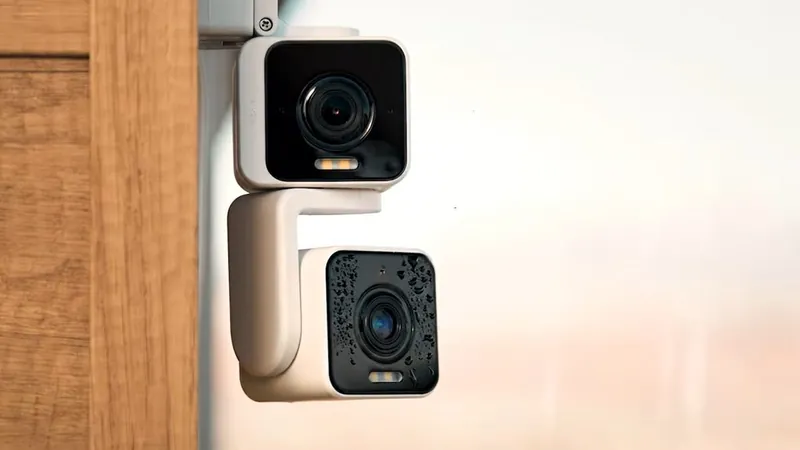
Unlocking the Secrets of Alien Life: The Habitable Worlds Observatory's Bold Mission
2025-07-16
Author: John Tan
The quest to uncover life beyond Earth is revving up, and it's all thanks to a groundbreaking project known as the Habitable Worlds Observatory (HWO). Set to launch in the early 2040s, this ambitious mission aims to not only scan for planets that could host life but also to gather the definitive evidence needed to prove we are not alone in the universe.
Revolutionizing Exoplanet Research
Led by exobiology experts from Europe and the US, under the direction of Svetlana Berdyugina from ISROL in Switzerland, HWO is positioned to reshape our understanding of the cosmos. According to a fresh study, this observatory could be the key to documenting signs of extraterrestrial life—if we can find the right planets. The initiative springs from the findings of the Astro2020 Decadal Survey, revealing a growing desire within the scientific community to tackle the fundamental question: "Are we alone?" However, achieving these goals will require new technologies and substantial funding, with estimates placing the mission's cost at around $10 billion.
Cutting-Edge Technology at Work
At the heart of HWO's design are two innovative features: a coronagraph and a polarimeter. The coronagraph effectively blocks out the starlight, allowing the faint light from distant exoplanets to shine through. Meanwhile, the polarimeter measures how light vibrates as it travels through space. Although similar technologies have appeared on previous missions, HWO's unique combination and targeted approach will allow it to focus intently on potentially habitable worlds.
A Four-Step Plan to Discover Life
HWO’s mission involves a meticulous four-stage observational program. The first stage centers on identifying potentially habitable planets. Next, the observatory will determine whether any of these worlds are 'living.' Thirdly, it will create detailed surface maps, revealing the distribution of land, ocean, and possibly photosynthetic life. The fourth and most crucial step involves measuring the chirality of molecules—a key indicator of life. On Earth, all living organisms use homochiral molecules, which exhibit a distinct pattern of polarization in light.
A Chance to Find Biosignatures
Finding candidate 'Living Worlds' is a task not solely for HWO; instruments like the James Webb Space Telescope (JWST) are already adding candidates to the habitable zone lists. However, HWO's integrated capabilities will leap ahead in the search for biopigments like chlorophyll, which emit specific polarized light signals undetectable by current telescopes. Once a promising living candidate is identified, HWO aims to map its surface—potentially the first step toward an image of distant life.
The Smoking Gun: Detecting Chirality
The ultimate goal hinges on detecting chirality, considered the 'smoking gun' in astrobiology. Life on Earth displays homochiral molecular structures, generating specific signals in polarized light. HWO's sophisticated instruments are designed to pick up these exceptionally faint signals, which will stand out against the background noise of cosmic phenomena. If successful, this could be the breakthrough we've been waiting for, confirming life exists elsewhere.
The Future Awaits
The future of the HWO, like many large-scale scientific missions, is uncertain amid budget constraints and shifting priorities. However, if it stays on track, we may soon witness unprecedented glimpses into extraterrestrial biospheres, potentially reshaping our understanding of life in the cosmos. Buckle up—an exciting journey to uncover the mysteries of alien worlds is just around the corner!


 Brasil (PT)
Brasil (PT)
 Canada (EN)
Canada (EN)
 Chile (ES)
Chile (ES)
 Česko (CS)
Česko (CS)
 대한민국 (KO)
대한민국 (KO)
 España (ES)
España (ES)
 France (FR)
France (FR)
 Hong Kong (EN)
Hong Kong (EN)
 Italia (IT)
Italia (IT)
 日本 (JA)
日本 (JA)
 Magyarország (HU)
Magyarország (HU)
 Norge (NO)
Norge (NO)
 Polska (PL)
Polska (PL)
 Schweiz (DE)
Schweiz (DE)
 Singapore (EN)
Singapore (EN)
 Sverige (SV)
Sverige (SV)
 Suomi (FI)
Suomi (FI)
 Türkiye (TR)
Türkiye (TR)
 الإمارات العربية المتحدة (AR)
الإمارات العربية المتحدة (AR)